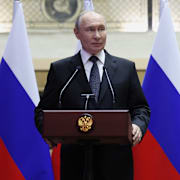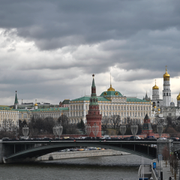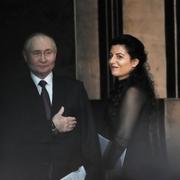
Ryskt politiskt dokument antyder planer på att bilda ny stat i södra Ukraina
Ett dokument författat på toppnivå inom Rysslands styrande parti avslöjar planer på att bilda en ny stat, kallad Södra Rus, i de ryskockuperade delarna av södra Ukraina. Det rapporterar RFE/RL, som kommit över det.
Metadata i Word-dokumentet, daterat till den 16 april, tyder på att det författats av – eller under överinseende av – Roman Romanov, en högt uppsatt företrädare för Putins parti Enade Ryssland. Det specificerar inte exakt vilka territorier som är tänkta att ingå i det så kallade Södra Rus.
Rus, även känt som Kievrus eller Kievriket, var en löst sammansatt medeltida stat med Kyiv som centrum – en föregångare till det moderna Ukraina och Ryssland.
bakgrund
Kievrus
Wikipedia (en)
Kievan Rus', or Kyivan Rus', (Old East Slavic: Роусь, romanized: Rusĭ, or роусьскаѧ землѧ, romanized: rusĭskaę zemlę, 'Rus' land' Old Norse: Garðaríki) was a loose federation in Eastern Europe and Northern Europe from the late 9th to the mid-13th century. Encompassing a variety of polities and peoples, including East Slavic, Norse, Baltic and Finnic, it was ruled by the Rurik dynasty, founded by the Varangian prince Rurik. The modern nations of Belarus, Russia, and Ukraine all claim Kievan Rus' as their cultural ancestors, with Belarus and Russia deriving their names from it. At its greatest extent in the mid-11th century, Kievan Rus' stretched from the White Sea in the north to the Black Sea in the south and from the headwaters of the Vistula in the west to the Taman Peninsula in the east, uniting the majority of East Slavic tribes.According to the Primary Chronicle, the first ruler to start uniting East Slavic lands into what would become Kievan Rus' was Prince Oleg (879–912). He extended his control from Novgorod south along the Dnieper river valley to protect trade from Khazar incursions from the east, and moved his capital to the more strategic Kiev. Sviatoslav I (943–972) achieved the first major expansion of Kievan Rus' territorial control, fighting a war of conquest against the Khazars. Vladimir the Great (980–1015) introduced Christianity with his own baptism and, by decree, extended it to all inhabitants of Kiev and beyond. Kievan Rus' reached its greatest extent under Yaroslav the Wise (1019–1054); his sons assembled and issued its first written legal code, the Russkaya Pravda, shortly after his death.The state began to decline in the late 11th century, gradually disintegrating into various rival regional powers throughout the 12th century. It was further weakened by external factors, such as the decline of the Byzantine Empire, its major economic partner, and the accompanying diminution of trade routes through its territory. It finally fell to the Mongol invasion of the 1240s, though the Rurik dynasty would continue to rule parts of Rus' until the 14th century in the Kingdom of Galicia–Volhynia and until the 16th century after the establishment of the Tsardom of Russia.
Omni är politiskt obundna och oberoende. Vi strävar efter att ge fler perspektiv på nyheterna. Har du frågor eller synpunkter kring vår rapportering? Kontakta redaktionen



